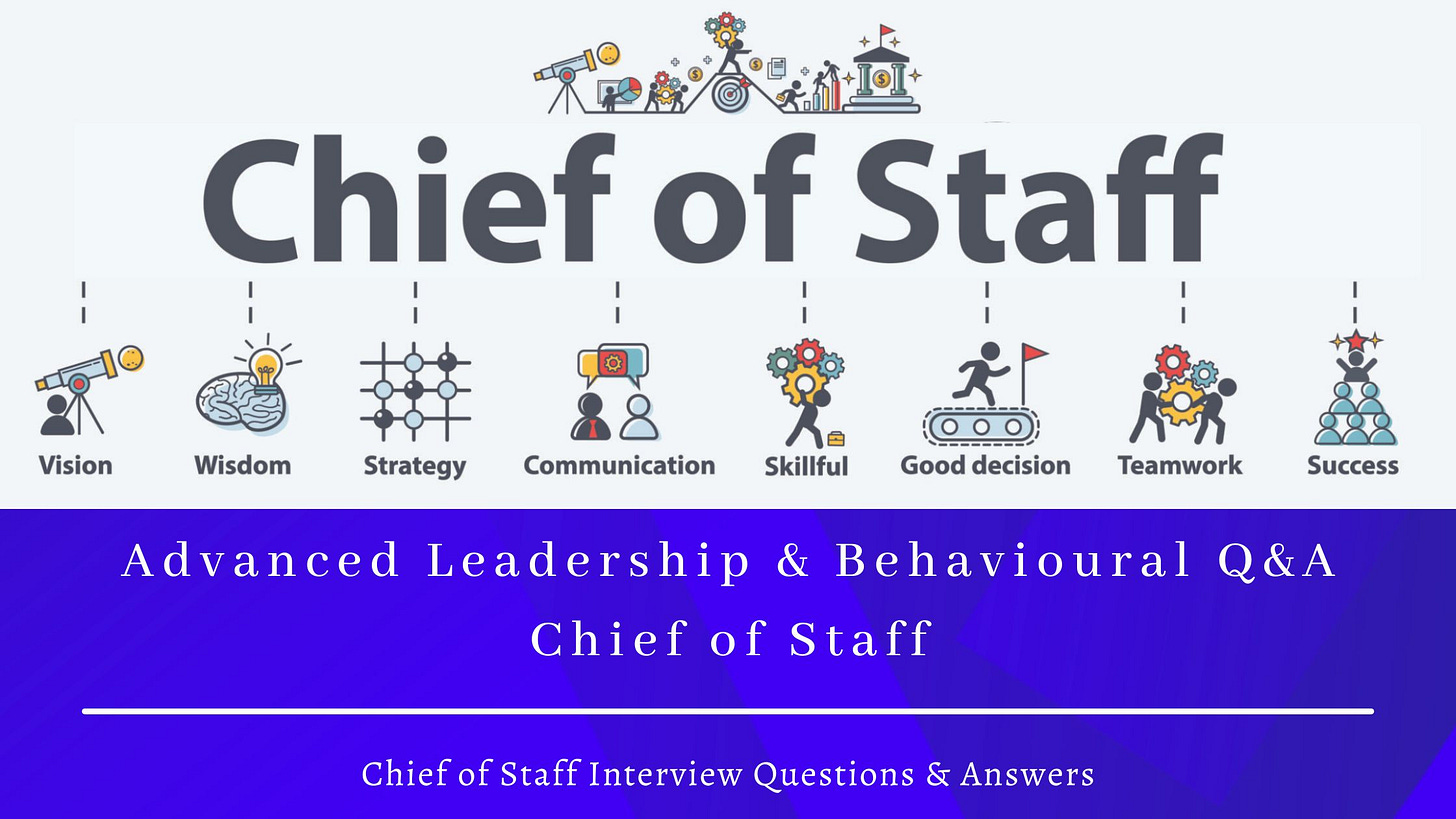Advanced Leadership & Behavioural Q&A-Chief of Staff - PART-2
Chief Of Staff Interview Preparation- Strategic Insights to Master High-Stakes Executive Interviews - PART-2
Advanced Leadership & Behavioural Q&A-Chief of Staff (Part 1)
What You’ll Explore in This Module:
📘 Overview
🧠 Learning Objectives
📋 Sections 6–10
📝 Suggested Activities


